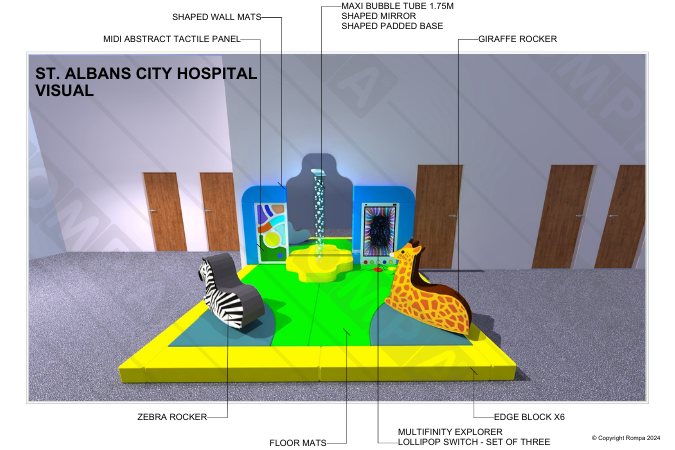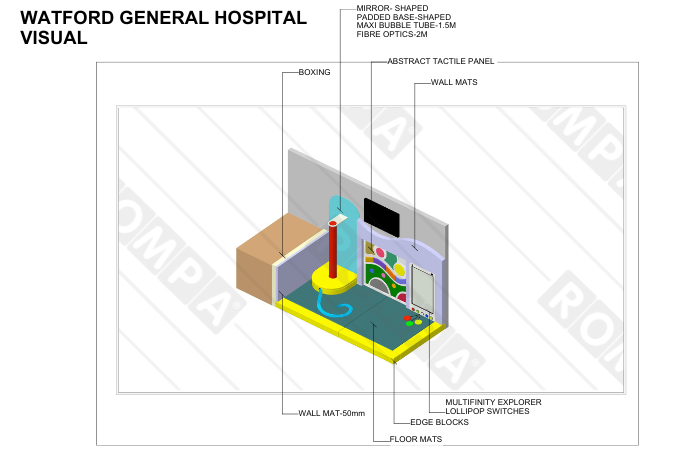We’re raising £36,000 to create child-friendly, sensory play areas in the Outpatients Departments at Watford General, St Albans City Hospital, and Hemel Hempstead Hospital. Each play area will cost £12,000, and with your help, we can provide a more welcoming and supportive environment for children and their families.
Currently, there’s no dedicated waiting area for children. This often leaves young patients bored and anxious, while parents struggle to keep them entertained in a clinical setting. By introducing interactive and sensory-focused play areas, we can transform these spaces and improve the overall experience for everyone involved.

While the current provision of small chairs, books, and toys meets the minimum standard, we aspire to create spaces that show real care for the atmosphere and experience of our young patients.
Sensory waiting rooms will engage children through interactive and stimulating features like tactile wall panels, sensory tables, bubble walls, and themed play areas. These additions will provide:
Encouraging touch, movement, and problem-solving.
Using light-up displays, interactive projections, and musical panels to create a calming yet engaging environment.
Spaces for children to self-regulate if they need a break from stimulation.



By giving us your email address, you’re giving us permission to email you about our news, events and fundraising. For further details in relation to how we handle the personal information you provide to us, please see our privacy notice.